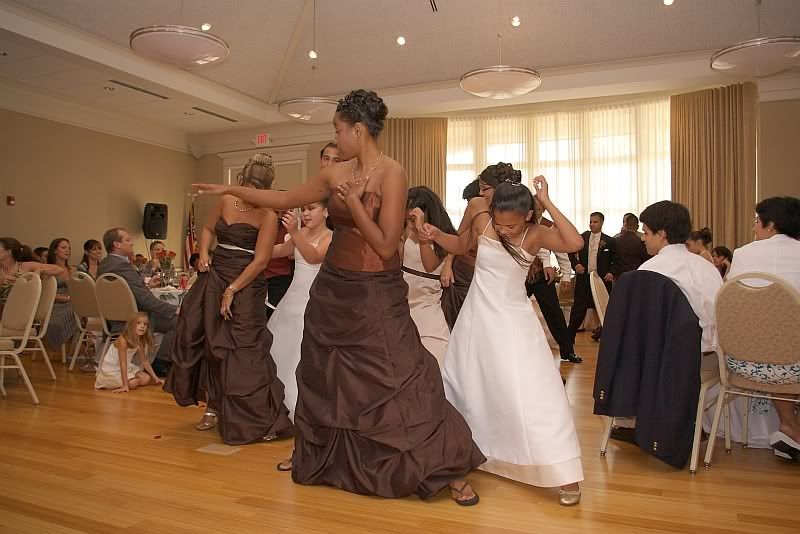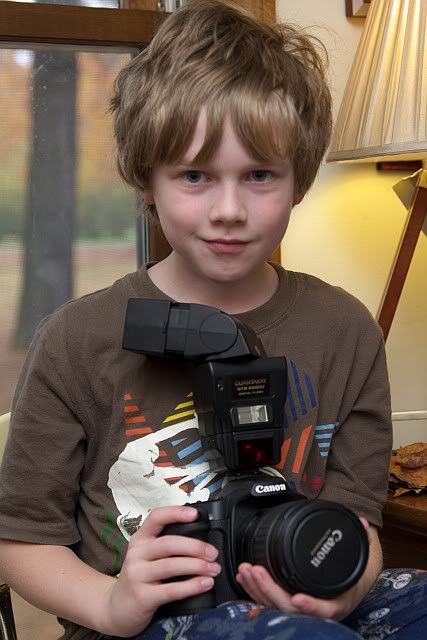-
Making the best of a camera's pop-up flash
So I know for certain that I do not have the money to justify buying an external flash, but I will most likely need to use a flash this summer quite often. What can I do to get the best out of the pop-up flash? are there simple materials that I can place over the flash to make it less intense?...any suggestions that could possibly help are welcome.
-
Re: Making the best of a camera's pop-up flash
Tim,
Several questions:
1) What are you shooting this summer quite often?
2) What camera/lens combo(s) are you going to be using?
3) Quantify "money to Justify" $100.00, 200.00, etc...
If you have bought a camera body and invested in a good lens or good lenses then how can you not justify investing in a good externalflash? This to me is a very important part of my art.
Here's some examples of what can be accomplished using a $135.00 flash from Ritz. I like this flash for several reasons. 1) E-TTL 2) Dual flash. Bounce head plus an optional on-axis fill flash 3) Modular. Bottom Canon module is seperate. Can be swapped for manual, Nikon, Sony, Pentax, etc. If the ears break off I can replace it for $35.00USD.
Here are some examples:
1st shot: Action stopping light. colors pop. The backlight from the large window would have made this shot very difficult without flash. I used the head to bounce light off of the cieling and the on-axis strobe to fill in everything else. Nice even light withGood depth.

2nd shot: Same strobe, just the main flash head. I used it hand held by attaching it to an off-camera cord. Shot through a sheet and used poster board to bounce in directional fill. This shot has one light source only!

3rd Shot: birthday picture... nothin special, I just like it, and I like the way the flash bounced off the wall and ceiling behind me gets plenty of soft, intense light on my subjects.

Last Shot: The standard external flash bounce setup for indoor shooting in small to medium size rooms.

Hope this helps with your justification process,
Chuck
-
Re: Making the best of a camera's pop-up flash
I'm traveling to Honduras and Alaska and will be shooting a lot of photos inside of people or a water purification system for documentation reasons. I have a 30D, 17-40L, and 50 f1.8. The reason why I can't justify buying an external flash is that these trips will require most of my money. So even $100 would be risky.
-
Re: Making the best of a camera's pop-up flash
Tim,
Are these photos for profit, job, or personal enjoyment?
Chuck
-
Re: Making the best of a camera's pop-up flash
Thanks for the tips, I will not make any profit on these shots, many will be for my personal enjoyment, but I hope to get a few shots that will be used for marketing purposes...still for no profit though. I'd prefer not to use a huge flash mostly because of the attention it would get. I'll use my 50 1.8 more than my 17-40 with people because its lessnoticeable. I don't really need pointers on how to use external flashes, I know they will be better, I just want to make the most out of what I have.
-
Re: Making the best of a camera's pop-up flash
I hear you. Tim,
If you want to make the best of the pop up flash on your camera then I would suggest:
Between now and the time you leave try to take at least 10 pop-up flash shots per day for practice. Think about all the scenarios you may be shooting in and do your best to experiment with different types of lighting. Learn when and how to use your flash compensation setting and get yourself use to the results that it gives. That will help to take the guess work out of the equation when you get there and need to capture something important. Read up on using gels with flash and order a sheet of Rosco CTOfrom somewhere like Midwest Photo Exchange. Figure out an easy method of putting gel over your pop up when needed. This can make a big difference when shooting inside in ambient light. The main thing is is that you practice. If you run into a situation where the results are not what your looking for, post some pics with EXIF intact and I'm sure there's half a dozen guys or gals here that can suggest ways of getting better results under that particular shooting situation. Good help and advice, tips and techniques are the reason we're all here.
Take Care,
Chuck
-
Re: Making the best of a camera's pop-up flash
Chuck,
What kind of flash is that? You got it for $135? It sounds (and looks) like you are very pleased with it.
Tim,
Here is a link to a diffuser for the built in flash.
http://www.ritzcamera.com/product/532047610.htm
I've never used it before so you would want to check out some customer reviews. (Also see if you can find it cheaper. Ritz overcharges)
But if it turns out it's not what you need, you're only out $20.
-
Re: Making the best of a camera's pop-up flash
The problem I see with what you're asking is that the on camera flash has so little flexibility on how you use it. With even the cheapest external flash that has just basic rotational abilities, you can use nearby reflective surfaces (or a white piece of poster board) to dramatically improve the diffusion and directionality of light.
I would say, though, to put the camera in manual mode, use as much as the available light as possible, and as little flash intensity that you can get away with. If you can bring a tripod, even a cheap one, do that. Before I had an external flash, I used to use flashlights or headlights with nice even dispersion at otherangles. With the on-camera flash, use the flash primarily for fill to lighten the dark areas that the available light doesn't provide. It will take, probably multiple tries for each environment, and constant peaking at the histogram to see where your data falls, but I'd guess that your images will be substantially better that way.
But, the first priority I'd have, if you don't have to stop motion, is use available light, timer drive mode, and any tripod you can get, even if it's a cheapy one at a thirft store. I got some pretty decent night shots with my point and shoot and a mini tripod I picked up for like $15 at radio shack.
-
Re: Making the best of a camera's pop-up flash
Rodger,
http://www.ritzcamera.com/product/QTB9550DCN.htmIt's gone up a bit since I last looked...now $160.00 (thats still a steal).
Ignore the bad review score. The first guy is using the SLR "film" module. It has "auto" Thyristor, "manual" full&1/16th.That review doesn't even belong with the digital E-TTL module and flash pack. The second is obviously do to user error. The user was doing something like shutter speed at 1/500th. That's why the image was black. The sync speed is 1/250 or lower depending on camera.
If been using this flash since my film days and have owned 4 all together. My wife and I currently use two with the Canon "digital" modules. We occasional have misfires do to the large flash creaping out of the hot shoe. Other than that we're very pleased.
Also: Promaster carries the exact same flash: http://www.promaster.com/products/products.asp?CatID=150&CatSM=&SubCatID=3&a mp;CatName=Electronic%20Flash&SubCatName=Digit al%20TTL%20&sm=sm2_1503&dir=&page=PROD &product=9887 can be purchased through a Promaster dealer. They have some extra options for Pentax users that Quantaray through Ritxz does not have.
 Posting Permissions
Posting Permissions
- You may not post new threads
- You may not post replies
- You may not post attachments
- You may not edit your posts
-
Forum Rules





 Reply With Quote
Reply With Quote



